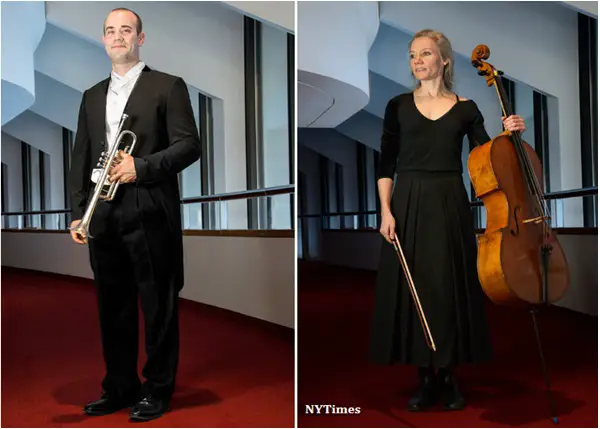
Orchestra musicians have worn the same clothes (more or less) for a century now. But for how long can they look perfect in the same black tie every night? And that too in a physically strenuous job, and in hot, cramped quarters? That’s the reason lot of musicians have decided to opt for a more modern dress code that is more in tune with the modern times.
For men, the problem with their current dress is that the whole tailcoat get-up, with its cumbersome jacket, fussy shirt and bow tie, is suffocating, restrictive and awkward. For women, however, the issue is not discomfort, but more of style.
As part of a pilot project, music director of the Baltimore Symphony Orchestra worked with a Design school in order to come up with more fashionable options for both men and women musicians. The first official uniforms were worn by about 12 musicians at a February concert celebrating the Baltimore Symphony’s centennial, with plans to unveil the full line in June, when the League of American Orchestras is to convene in Baltimore.

A positive side effect of orchestra musicians dressing in black is that it tends to be less of a distraction to the audience. They’re more likely to focus on the music than on the appearance of the orchestra.
If it all seems like a lot of work to outfit an orchestra, with almost 10 articles of clothing each for men and women to choose from, we just hope that the new clothing line goes into wider production, to serve orchestras, bands and even formal-wear buyers — and perhaps pave the way for an easier and less costly way for black-tie wear to move into the future.
Dress Code for Women in Orchestra
In America, The Philharmonic, along with some of the nations’s largest orchestras, does not allow women to wear pants for formal evening concerts. Most women wear floor-length black skirts or gowns during their performances.
That could however soon change.
Bowing to pressure from women who argued that the dress restrictions were not only unfair, but could also hinder their ability to play comfortably, other major orchestras have moved in recent years to let women wear pants if they choose.
There are practical considerations as well; some musicians also feel that formal wear hinders with playing. Playing an instrument is physically demanding, and many musicians of both sexes find standard formal wear constricting.
Julie Ann Giacobassi (English horn player) was playing Mahler’s Second Symphony when one of the keys of her instrument got stuck in the folds of her skirt.
Julie was instrumental in revolutionizing the dress code of the San Francisco Symphony in the 1980
While most orchestras now allow women to play formal concerts in a variety of pants and slacks, the Philharmonic allows pants only at matinees, Young People’s Concerts, parks concerts, or when playing in contemporary music ensembles. Not at evening subscription concerts, the core of its season.
However, it’s a challenge to find a broadly acceptable solution, when it comes to clothes that are comfortable, good enough to give a sense of occasion, pleasing longtime patrons, who tend to be conservative in their tastes and have indicated in research surveys that they like things as they are; and finding new outfits that can stand the test of time.
A lot of orchestras have tried different takes on men’s and women’s formal wear but haven’t been entirely successful. One orchestra in the 1970s switched to velveteen jackets with wide lapels and bell bottoms; for a year or two they looked totally cool, and then they were a joke. In 1958, Philharmonic’s music director Leonard Bernstein tried to get the orchestra to wear more modern Nehru jackets for some concerts. They were not popular, and within months he dropped them.
KeytarHQ editorial team includes musicians who write and review products for pianists, keyboardists, guitarists & other musicians. KeytarHQ is the best online resource for information on keyboards, pianos, synths, keytars, guitars and music gear for musicians of all abilities, ages and interests.



Historically, black dress for orchestral musicians was the same as the standard evening wear for servants, as the modern public orchestra evolved from the private orchestras of the 18th and 19th century aristocracy in Europe.
From about the early 18th century onward, the dress for any orchestra was the same as other servants of the noble household. By the 1860s, roughly, this meant the black-tie tuxedo. As women began to be incorporated into performing ensembles, the standard dress for them became a black dress or suit as well, to match. Black simply stems from historical dress for household servants, and because of its practicality it has gone largely unchanged.
An instrumentalist soloing with the orchestra will typically (but not always) closely match the orchestra in dress; solo singers, especially females, often dress more colorfully and extravagantly to highlight their role as soloist.